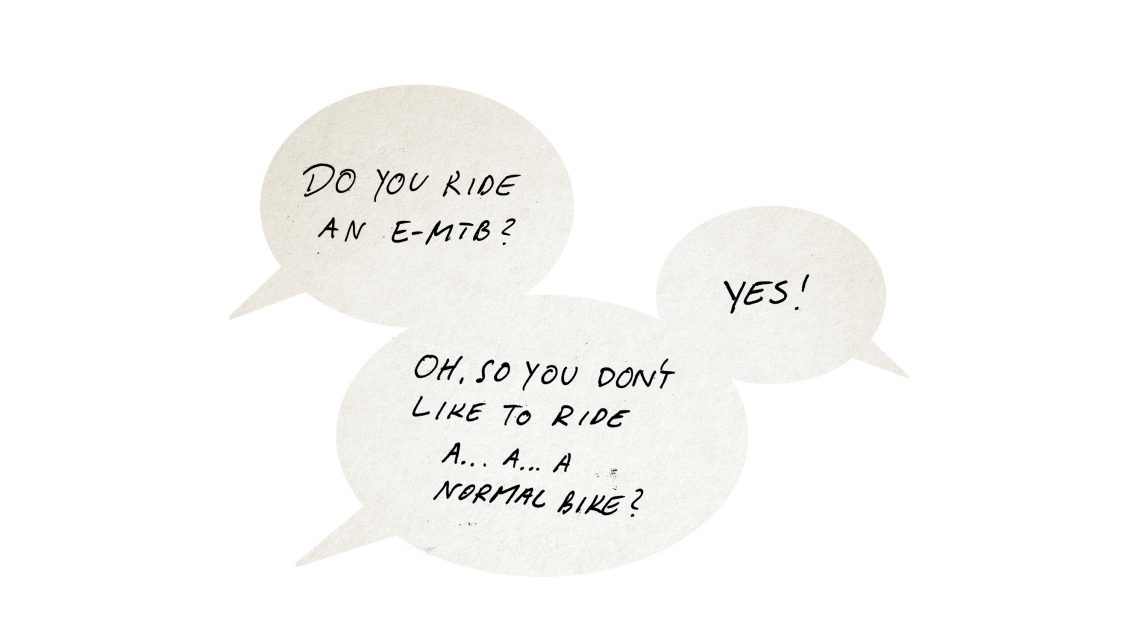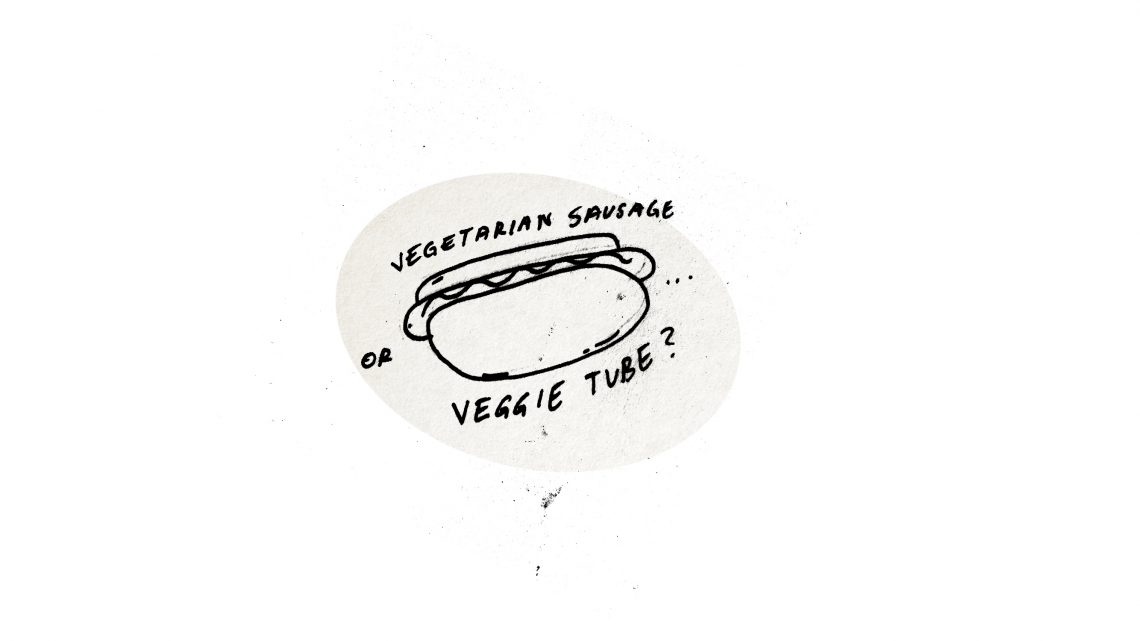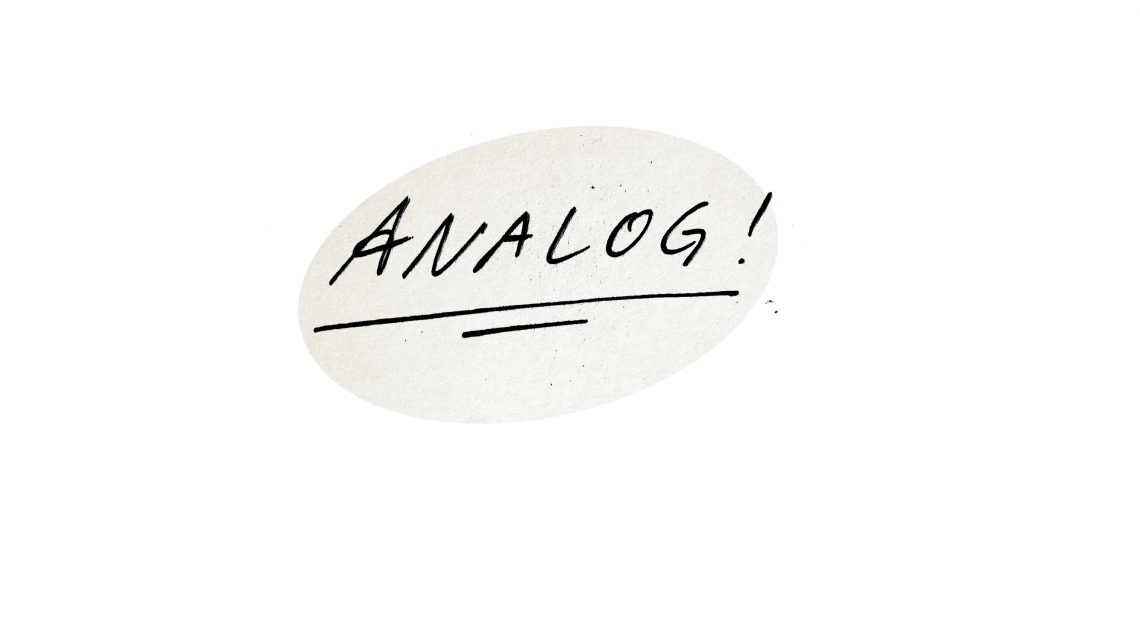For many years, we just had bikes. Perhaps you called them bicycles or cycles, but whatever you preferred, the meaning was the same – two wheels, pedals, a drivetrain. a saddle, all adding up to a bike. Life was simple. So, why have things changed?

This well-meaning statement was levelled at me one Sunday while high on a mountainside. After a brief and pleasant exchange, it left me thinking. To me, my eMTB is just a bike. However, at home, I also have a bike without a motor – is that my ‘normal’ bike? Does that mean that when I ride my eMTB I’m abnormal? As much as I strive for individuality, abnormal is probably not something I would write on my LinkedIn profile. But then what does normal even mean? The dictionary defines normal as “ordinary or usual; the same as would be expected.” Is that what we strive to be? Ordinary and usual? Besides, if normality is defined by the masses, then the huge increase in eMTB sales might suggest that it’s not so long before eMTBs become the new normal. While normality doesn’t define whether something is right or wrong, it’s inverse,abnormal, is defined as “different from what is usual or average, especially in a way that is bad.” In the case of eMTBs, how can something that offers so much fun and satisfaction be bad?
So if non-motorised bikes are not ‘normal’, what are they exactly? As sales of eMTBs gain momentum and the release of crossover bikes like the Specialized Levo SL gain ever boarder appeal among ‘core’ mountain bikers, the gap between eMTB and MTB is getting smaller and smaller. Increasingly, we need to discuss both options in the same sentence to the same audience. As such, we need to get our terminology straight. The bike industry loves new words: enduro, downcountry, and uphill-flow have all become commonplace and eMTBs have introduced their very own vocabulary, but we still struggle when asked how to refer to bikes that don’t have a motor?
The terms classic bike, traditional bike, push bike, non-motorised bike, conventional bike and unpowered bike all spring to mind, but do any really fit?
Every year, our language grows. Reacting to changes in technology, our vocabulary also needs to expand. In an evolving world, change is inevitable. Take for example a recent survey that found that over 25% of smartphone users had not used their smartphone to make an actual phone call. How long will it be before “call me” has been completely replaced by “WhatsApp me”? Email, Instagram, noob, bro hug, schmoozefest, YOLO, and selfie have all become official words in the last ten years. In 2019, we were given hundreds of new words, learnt that bampot can now officially be used to describe a foolish, annoying, or obnoxious person, and that someone who is showy, fancy or ostentatious can be described as fantysheeny. As excited as I am to call someone a bampot, this still does not help us solve our ‘normal’ bike puzzle. You’d think that with over one million words (177,000 official ones) at our disposal we would have everything covered, but still, we sometimes struggle to choose the right terms.
While we ignore the email from our boss about the latest schmoozefest, we instead waste time scrolling through noobs posting selfies and bro-hugging themselves on Instagram, because, well, YOLO; the Oxford English Dictionary is busy adding around 1000 new words, senses and sub-entries each year.

What about ‘traditional’, ‘classic’ or ‘old-school’ bike? Undoubtedly, eMTB’s are the more modern of the pairing so it’s perhaps not completely unfair to treat the non-motorised option with a little nostalgia. However, in use, we soon grind to a halt. Imagine, for example, a rider standing next to their cutting edge Pole Stamina enduro bike, featuring space-age CNC manufacturing and a wireless SRAM AXS drivetrain. Does that seem an image synonymous with the words classic, traditional or old-school? Modern mountain bikes have come a long way from sepia images of 80’s kids pulling skids on their Raleigh Grifter or wool clad gentlemen straddling penny farthings. Nostalgic terminology just doesn’t fit.
Then there’s push bike. Push bike is universally the most common term in use, probably because it has served as a rather derogatory term motorcyclists used to describe what they consider the childish equivalent of their powerful rides. However, they’ve clearly not seen the endless forum comments that, “You could buy two motorbikes for the price of that eMTB!” so pedals are clearly more premium than petrol, meaning that push bike is out.
We could throw a hyphen into the mix. Technically correct, ‘non-motorised bike’ works well in isolation, but soon becomes tiring when used in sentences. For example, imagine writing, “The Santa Cruz bike is the new king of the trail bike sector.” Nobody wants to read, “The Santa Cruz non-motorised trail bike is the new king of the non-motorised trail bike sector.” If prose were cars, this would be a Fiat Multipla – ugly.

Taking a moment for a reality check, why choose a new word anyway? Take for example the vegetarian sausage. We have to ask ourselves why it was named sausage? Terms like sausage, burger and steak are all synonymous with meat and if you’re a vegetarian why would you want to eat a foot that implies you eat meat? We were given the exciting opportunity to name the vegetarian sausage whatever we liked – veggie tube, eco-banger, anything at all. Instead we just called it a sausage, because that’s what we were used to. We don’t want our non-motorised bikes to fall into that same trap. They need a name that is as exciting and sexy as the machines themselves. We posed the question to our Instagram followers and received some enlightened suggestions. Ideas included bio-bike, porridge-powered, naturally-aspirated, true, vintage, organic, slow, no-fun, eco and retro. We have to admit to laughing, somewhat understandingly, at ‘affordable’. We loved the simple idea of MTB and MTB+ but with the prevalence of the term eMTB, that ship has now sailed.
Perhaps we should roll up our sleeves and go full rock’n’roll with a guitar reference. How about the electronic bike and the acoustic bike? Imagine rocking out on an electric bike before going unplugged on an acoustic bike. I don’t know about you, but while it undoubtedly makes a great t-shirt slogan, I would feel a bit of an idiot asking someone to join me on an acoustic bike ride, even if the ‘unplugged’ reference is awesome. So what are we left with? Analogue? Well, it does work – the definition of analogue relates to a continuously variable physical quantity, like the action of pedalling with human power. The digital versus analogue idea also fits, so do we have a solution? Woah! Hit the brakes… Unfortunately, American writers tend to use analog instead of analogue, with the spellings largely interchangeable. However, we have also found that analog is predominantly used in relation to electronics and given that less is more we might have found a winner. So, analog it is!

It is difficult when a new technology comes along that makes us question our language and even with over one million words available to choose from we still sometimes find ourselves lost for words. We have drawn our line in the sand, ebikes and analog bikes, declaring an end to the confusion. It’s not perfect but the best of a bad bunch. While some will argue against our use of analog, nobody can argue against the need for a new term. As eMTB’s grow increasingly popular we have to wonder for how much longer we can keep calling bikes, bikes.
Did we miss something? Write in and tell us how you would describe a non-motorised bike. hello@ebike-mtb.com
Did you enjoy this article? If so, we would be stoked if you decide to support us with a monthly contribution. By becoming a supporter of E-MOUNTAINBIKE, you will help secure a sustainable future for high-quality cycling journalism. Click here to learn more.
Words & Photos:









